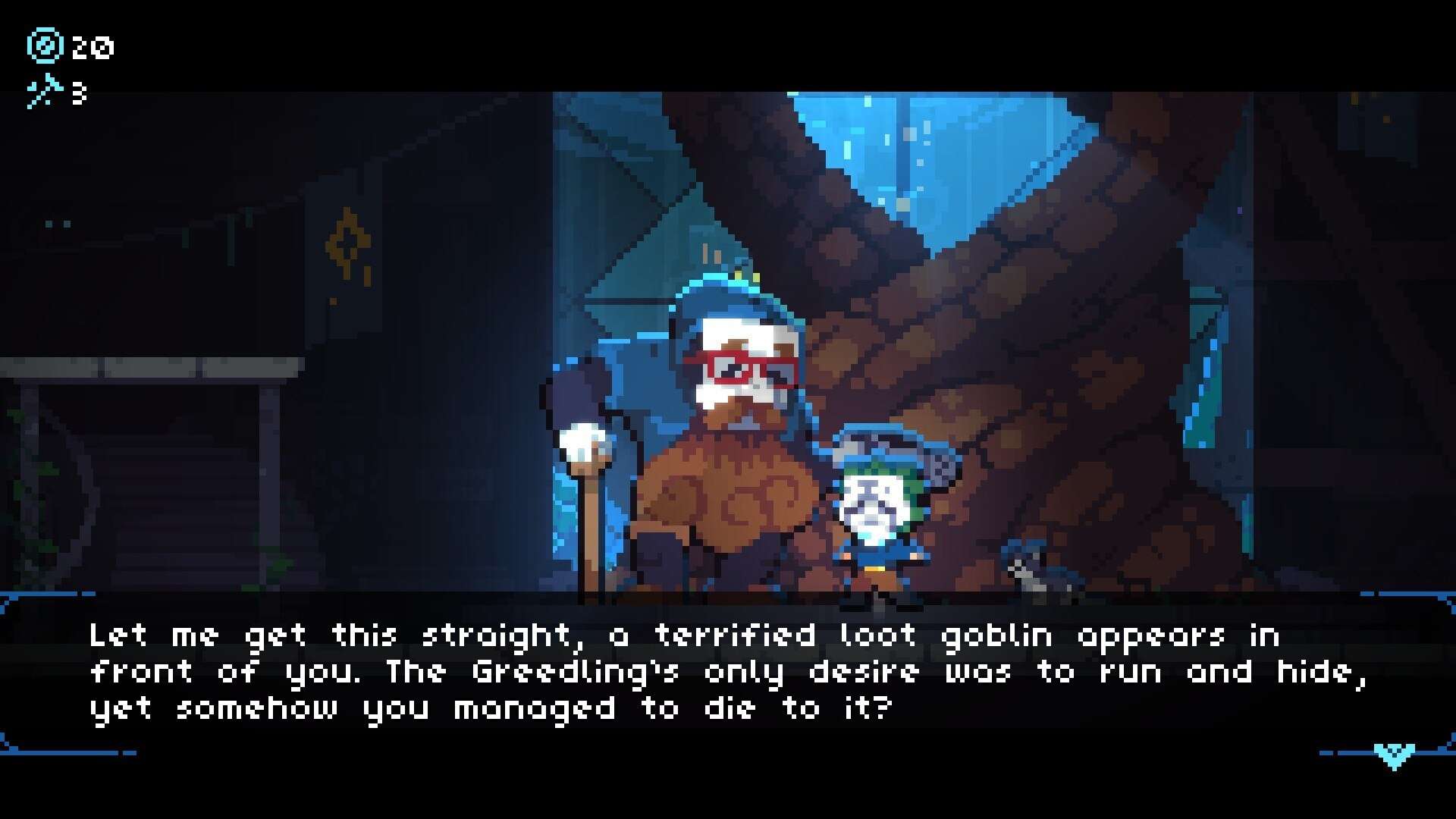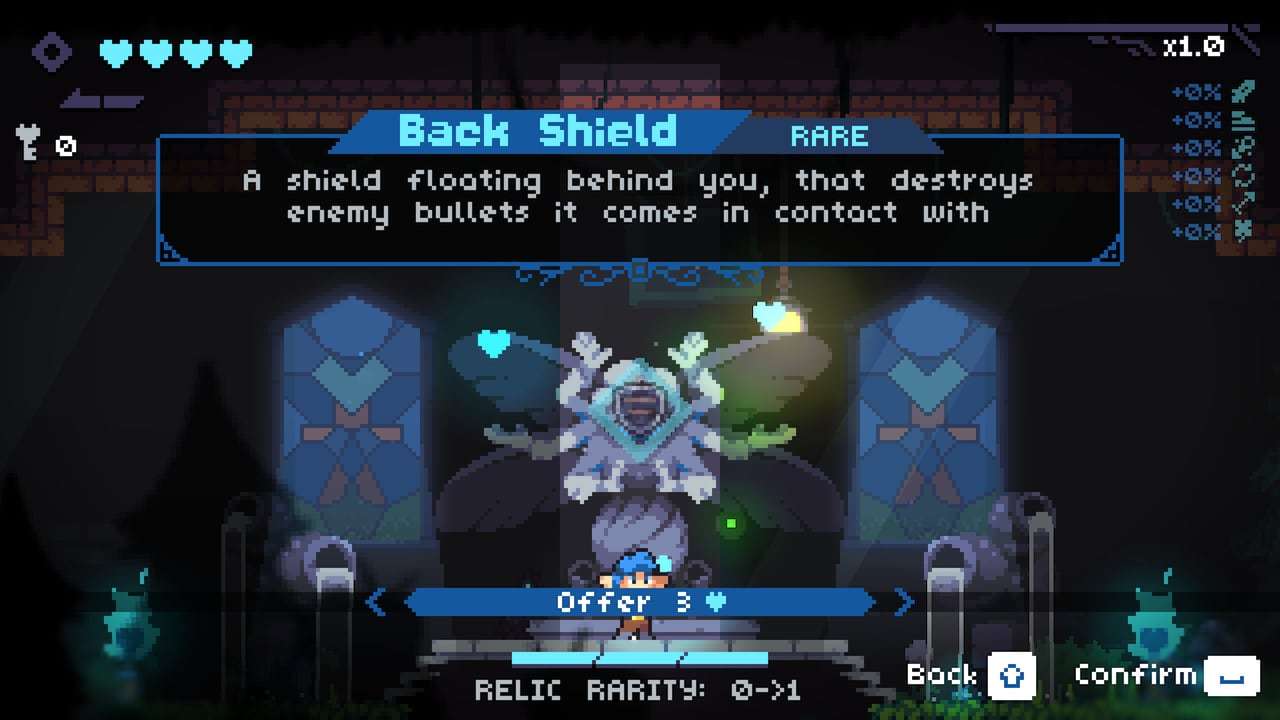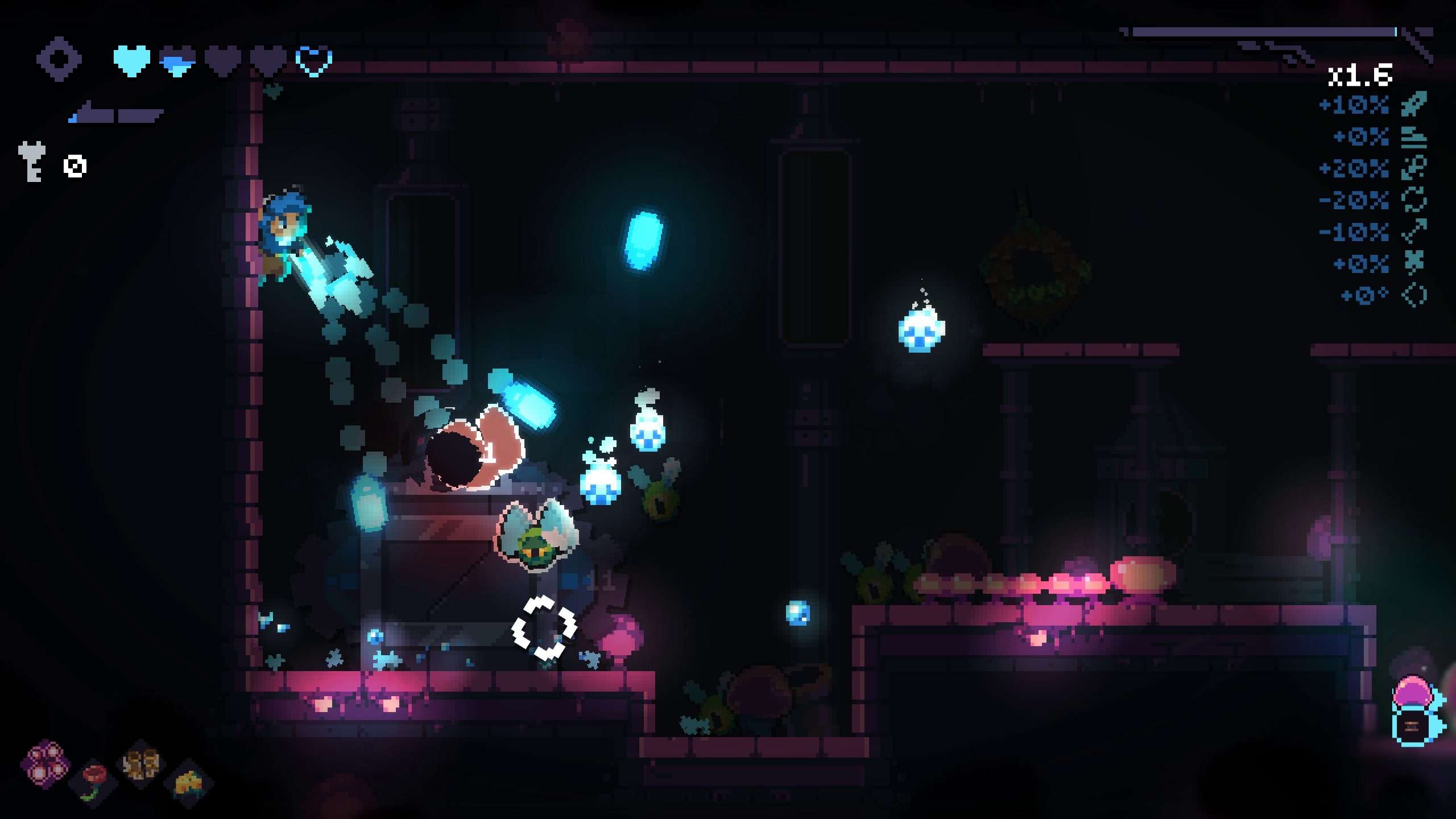
Revita PC Review
Roguelite has become such a popular subgenre that it seems everywhere nowadays. The quality ranges across the whole spectrum, but it is fair to say that it hit the big time when Hades was nominated for many Game of the Year awards in 2020, even coming second in our own Game of the Year honours list. Steam is full of games that fall into this category, so much so that there was recently a Steam event called “Going Rogue” to celebrate games that fall into such categories. While a lot of games seem similar, this event showed how the concept can be used in many different game genres, I even saw one based around racing cars!
Revita is the latest indie title that initially started in Early Access and was developed by Benjamin ‘BenStar’ Kiefer, before using fan feedback and growing the team a little to help get the game where it is today, its full 1.0 version release. The question that needs to be answered is how does Revita stack up in an already busy market?

An unknown boy who seems to have forgotten about his past is the protagonist of Revita. He arrives at the beginning of the game, with a special gun in hand I might add, at Memoria Station, which acts as a home base. There is a desire from the boy to reach the top of the Clocktower, a destination within reach from the train station. There are many floors that need overcoming so that the protagonist can travel up to the top and hopefully gain the answers that he seeks about his lost memory. Of course, the journey is not easy, as plenty of monsters and bosses are putting a stop to his plan, killing him and keeping the boy in a loop leaving him with that desire to try again and get to the top. This is a game that tells its story through cryptic means, a figure-it-out-yourself through key visuals and dialogue, where various none playable characters will add snippets to the general overarching story through their chat.
The game throws a warning about Revita dealing with themes such as mental health, grief, loss and suicide, and this is true to an extent, told through its mysterious nature and references to the stages of grief through its bosses, but to fully understanding what the game is saying requires the time to get through all the floors and reveal the conclusion. While the story itself is never at the forefront of the game, the themes around grief are used for gameplay, but I do not think that will prevent anyone from enjoying the experience, due to its unconventionally and indirect storytelling.

Roguelite games are about their gameplay loop, and Revita has all of that done in a way that feels a bit like Binding of Isaac than any other Roguelite I have played. There is a focus on shooting, but rather than the top-down view that was used for Binding of Isaac, Revita is a twin sticker shooter as a 2D platformer. My reference to Binding of Isaac is to do with how this game is set out. As players start a run, they enter an elevator that moves them up floors, each floor being a room with enemies that spawn once the player enters. All enemies must be destroyed before the next elevator door opens and the player progresses to the next floor. Rooms only take a few seconds to beat. Still, they turn from simple designs with a couple of platforms to death traps hanging on the walls, spike pits popping up from the ground and a higher count of enemies which will challenge the player’s ability to track everything on screen and avoid taking damage while dealing their own. There are, of course, secrets hidden in a few of these floors as well.
There are a few abilities available to help with combat scenarios. The unknown boy can jump, wall jump, hang on walls and dash, the latter being incredibly helpful as it has invincibility to enable the player to get through enemies or their projectiles without being hit. The gun, known as the Soul Gun, is the main form of attacking, initially being the standard rate of fire and damage, but other weapons can be unlocked and switched to before the start of the run. These modify how the Soul Gun behaviours, so once the soul of the gunsmith has been found and enough materials have been picked up during a run, these additional guns can be bought, permanently unlocking them for future runs. Expect to see the Soul Gun behaviour like a machine gun, sniper, rocket launcher, or my favourite, the shotgun, which shoots out in threes, but at a slower speed than most other weapons, but does more damage for each of its three bullets. It seemed to be the weapon I had the most success with.

Sub weapons are also available, dubbed Celestial Weapons, but these are only found in the runs themselves and are removed on death. There are 12, one for each star sign, and I found they vary in utility. An example of these is that there is one that has the ability to shoot spears around you from the ground, another offers a grappling hook that gives invincibility during the animation, another is a boot stomp, and one can protect the player with buzz saws that spin around to deal damage if enemies get too close.
As with many games in this subgenre, dying and retrying is part of the experience, with the next runs often throwing in something new to keep the experience fresh. Revita does this through unlocks. In the early stages of play, the player will find souls that need to be saved. Doing so will add these characters to the home base, which enables new features. I already mentioned the gunsmith, well there are others, such as the imprisoned dark entity that unlocks new relics by finding prison keys. Buying these relics gives the player the relic at the start of the run on the first unlock, as to see what it does for the next time it is discovered with future runs. There is a Tinkerer who unlocks new room types within the Clocktower, such as challenge rooms, fountain rooms (healing rooms), and tree rooms. This, along with the limited procedural generation and enemy types, builds upon the initial play with new randomness. It always feels there is something to unlock for a few runs into the game. At this point, the limiting factor with how different a 2D room can be become evident, so after a few hours things will become familiar, but then it is down to the additional unlocks that help keep the player interested in going, such as shards that alter the run. Once the game has been beaten a few times and the true boss has been unlocked, shards then become the challenges to beat during future runs.

A fascinating mechanic for Revita is how upgrades are based on using the character’s health as a currency. This adds an extra level of strategy because the player has to think about the exchange of health for gear. If you only have two hearts left, can you risk losing one of these for an item that you might not know is worth the exchange? Finding a shop or offering hearts at the shrine is one way to see exactly what will be received, the latter allowing multiple heart offerings for more powerful returns, but sometimes might also have a curse to offset the advantage. The blacksmith, who upgrades relics, is another one that shows what is earned from the exchange. On the other hand, though, finding a secret, such as chests, does not reveal what is inside until the heart is spent, which can lead to rubbish returns from investing that precious health, which I have had a few times, so rather than picking up the item, I left the room disappointed at having wasted a heart. It is an intriguing gimmick that promotes risk-reward through the player’s own health decisions.
Not only do the heart offerings help with skill level – the lower-skilled players can keep their hearts while the higher skilled players might risk more for the rewards – but the game has ways to gain health back for overzealous heart sacrificers or players who take too much damage. A small metre sits under the health bar that represents how many souls have been collected. Each segment of this translates into restoring half a heart when the healing button is pressed. Souls are gained from killing enemies, but there is a combo metre on the right that will increase the souls left behind from enemies the higher it is. This metre drains while any enemies are alive, reducing the combo back down when not killing. This promotes haste for the reward of more souls, and in essence more heart recovery. One additional feature of the soul metre is that if all the hearts are already full, this can be used instead to generate another heart if enough souls are available, but using the healing button will only do this if all the hearts are full, and it takes four segments worth of souls to create a new heart, while it only takes two to fully heal an existing one.

One last major element of the game, and is something I’ve mentioned by word, are the relics. These pickups alter stats or behaviours of the game’s mechanics. Seven base stats – damage, movement speed, shot speed, fire rate, range, luck, and accuracy – can be altered by these relics. Additionally, other elements can also be changed, such as jump height, bullet amounts, bullet behaviour (I had one that left bullets hanging in the air), homing shots, and last but not least the effects such as adding bleed, confusion or stun. There is a lot packed into what seems to be a tiny game at first glance, and there are around 350+ of these relics to discover, with a character dedicated to giving details on everything the player has discovered so far in the game.
Strong sprite work helps towards Revita‘s wonderful style, an inspired 16bit look that shows how art can really shine while doing a throwback to the visuals of old. This is a game full of colour, but also uses this to set each mood for the biomes and their grief boss. Enemies are easy to see due to their simple yet distinct designs, and their designs are done so in a way so the player can see and learn about these enemies and know exactly what they are fighting against. The environments are unsophisticated, but with the blend of a great soundtrack matching the atmosphere that oozes from the artistic themes put into these biomes it ends up blending together extremely well. I am always pumped for a new run due to the first biome’s music. The sanctum music is also another one of my favourites. This plays as you decide how many hearts to sacrifice; it’s thoughtful, calming and magical.

Roguelites are often known for their challenge and Revita is no different. At the default settings, Revita offers a good challenge. I was presently surprised at noticing an accessibility section in the options that can help elevate some of the difficulties for people who might need help. Not only does it have visual hints, such as enemy outlines, HUD sizes, or altered controls to make them easier to perform actions, but it goes further and features options to decrease or increase damage, the strength of aim assist and game speed. This will no doubt allow more people to get into the game that might otherwise give up on it because they find it too hard. These options also enable the godlike roguelite players to increase their challenge, so it is a win-win situation for both sides of the gaming skill range.
It might be another roguelite, but Revita is a great addition to the already expanding catalogue of great roguelites. I personally do not play that many, but among the majority of the major players in the genre, Revita brings a well built and solid implementation of the roguelite design into a fun, addictive, and challenge 2D twin-stick platformer. Its distinct health currency mechanic adds a layer of strategy to build a risk-reward system on top of the genre’s foundations and the mechanic helps the game stand out from others. The only downfall is that after a few hours the room design becomes repetitive, as there is only so much that can be done on a 2D plane, but the constant unlocks help Revita to be a great package met with a good soundtrack, solid action and a well thought out game design.
